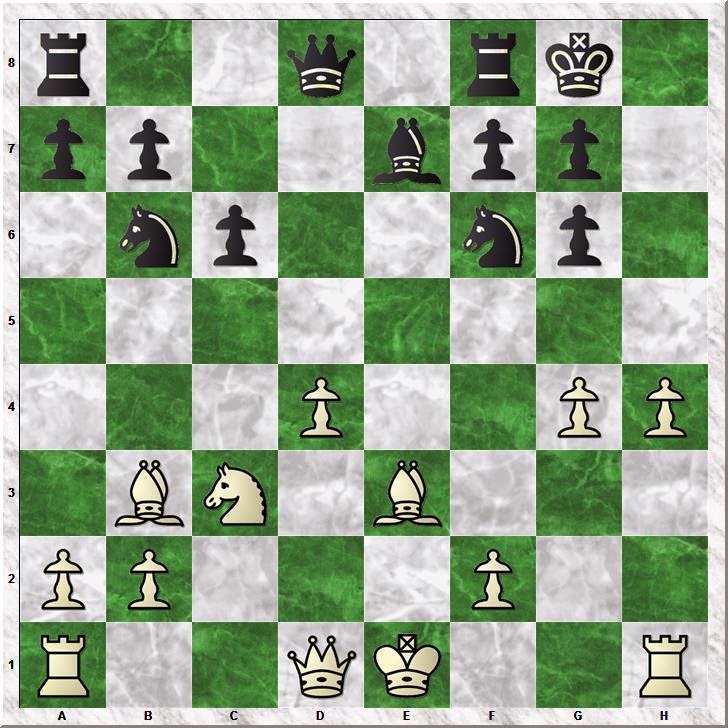Match 1, Game 15
Alexander McDonnell (1798-1835) lost a long string of games to Louis-Charles Mahé de La Bourdonnais (1795-1840) during their first match. After fourteen games, La Bourdonnais led 8-2 (draws did not count).
After going through all of McDonnell's games against other opponents that are available in the ChessBase database, I have been working through his games with La Bourdonnais. As I work through these games, blogging them, I am keeping my research light and avoiding analysis engines. I intend to work through all 85 games of their six matches, and then to spend more time comparing my comments to published comments by stronger chess players.
I posted my comments on game 14 in "McDonnell -- La Bourdonnais 1834". My series on this match begins with "Three Fighting Draws". Each post in the series contains links fore and aft.
De Labourdonnais,Louis Charles Mahe -- McDonnell,Alexander [D20]
London m1 London (15), 1834
1.d4 d5 2.c4 dxc4 3.e3 e5 4.Bxc4 exd4 5.exd4 Nf6 6.Nc3 Be7
For 6...Bd6 see "Weakened King" (game 12).
7.Nf3 0–0 8.h3
Black to move
8...c6
I would be inclined to try 8...Nbd7 with the idea of Nd7-b6 then to d5. Blackade the IQP. Posting a knight on d5 also reduces the vulnerability of f7. It was not surprising to find that my idea is given as one of the main lines in the Encyclopedia of Chess Openings.
Of course, there was no well-developed theory concerning isolated queen pawns (IQP) in 1834. Rather, as Colin Crouch noted last week, "to far greater an extent than anyone else in modern chess history, they had to think everything by themselves" ("The Extraordinary Summer of 1834"). When McDonnell and La Bourdonnais contested their matches, opening theory was primitive, endgame theory limited, and chess writing concerned with middlegame play almost non-existent. No other matches between masters had been recorded for the edification of those who followed.
The beginnings of modern chess theory are built upon a foundation of the study of the games of these 1834 matches by Paul Morphy, Howard Staunton, and those who followed in their wake.
9.Be3 Bf5
This move invites trouble, as White's pawns come forward with tempo
10.g4
First hit on the bishop.
10...Bg6 11.Ne5
Second hit on the bishop, taking advantage of the pin on f7. This pin seemed to be the decisive strategic element: continuous tactical pressure on Black's vulnerable king.
11...Nbd7 12.Nxg6
Wrecking Black's kingside pawns.
12...hxg6 13.h4
Another pawn comes forward. White's king sits on an open file, and cannot castle behind an intact pawn shield. Yet, Black's king is the one under attack.
13...Nb6 14.Bb3
Black to move
14...Nfd5
Black does manage to blockade the d-pawn, but perhaps too late. White seems to have the makings of a strong attack upon Black's castled position.
14...Nbd5 15.g5 Nh5 16.Qf3 and the d5 knight has only two defenders.
15.h5 Nxe3
McDonnell removes an attacker.
16.fxe3 Bh4+
Perhaps Black might have secured the kingside with 16...g5 17.Qf3 (17.h6 g6 18.h7+ Kh8) 17...Re8 (17...Nd5 18.Nxd5 cxd5 19.Bxd5) 18.Ne4.
17.Kd2
It is interesting to compare the vulnerability of McDonnell's king on g3 and h3 when he has White, to the vulnerability of La Bourdonnais's king in this position. The difference seems to be better piece coordination for the French player.
17...gxh5 18.Qf3 Bg5 19.Raf1 Qxd4+
White to move
McDonnell recovered a pawn with a pin.
20.Kc2
I am reminded of a recent tournament game--a Ponziani--in which my king might have found security here on c2 had I played better.
20...Qf6 21.Rxh5 Qg6+
21...Qxf3 appears to be the major alternative 22.Rxf3
Black to move
 |
| Analysis diagram |
22.e4 Nd5 23.Rfh1 Bh6 24.g5
Black to move
24...f5 25.Nxd5 cxd5 26.Bxd5+ Kh7
The pin of the f7 pawn is no longer a factor, but it contributed to White's decisive penetration along the h-file.
27.Rxh6+ gxh6 28.Rxh6+ Qxh6 29.gxh6 1–0
My comments on the next game can be found in "Strong Knights".


















No comments:
Post a Comment